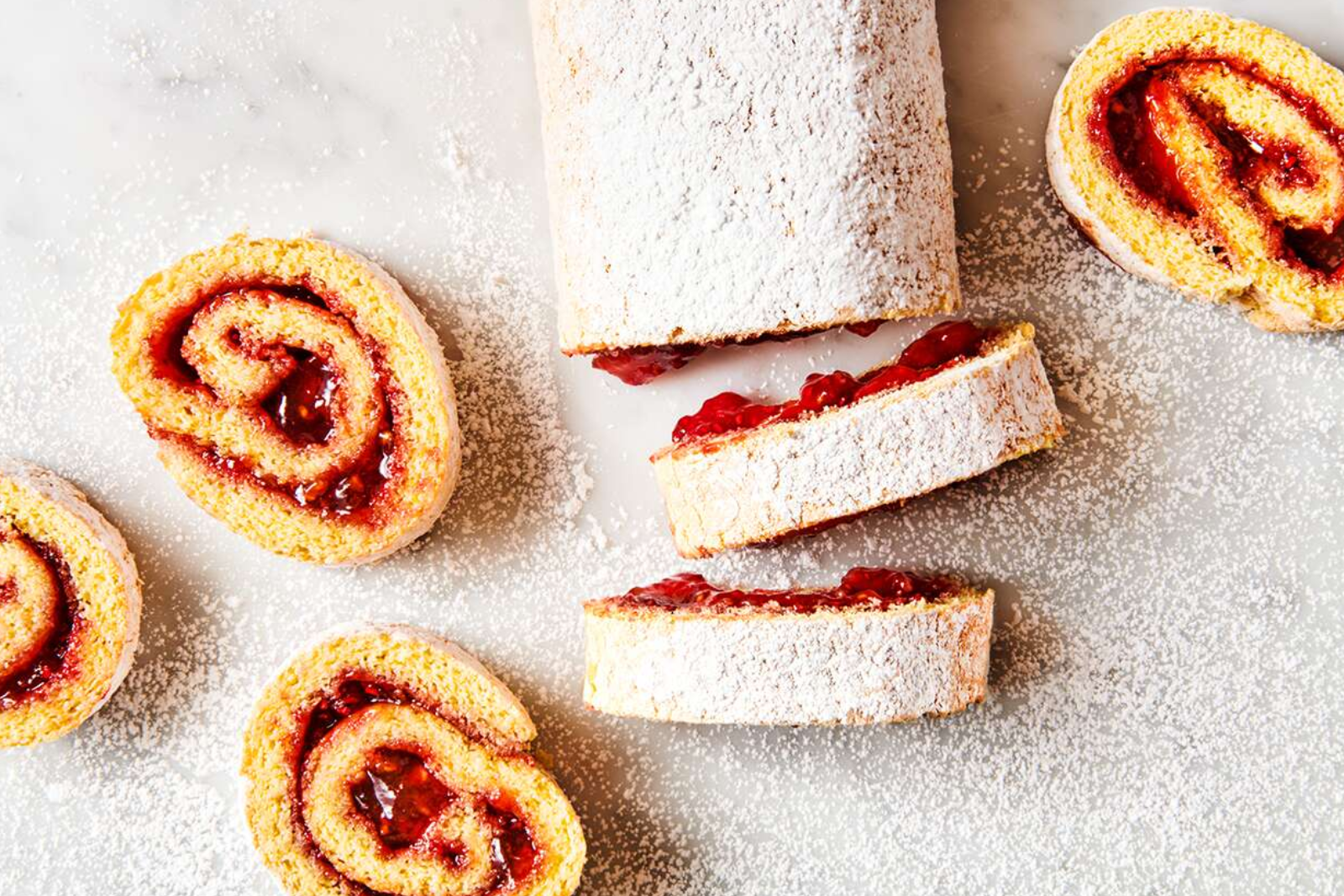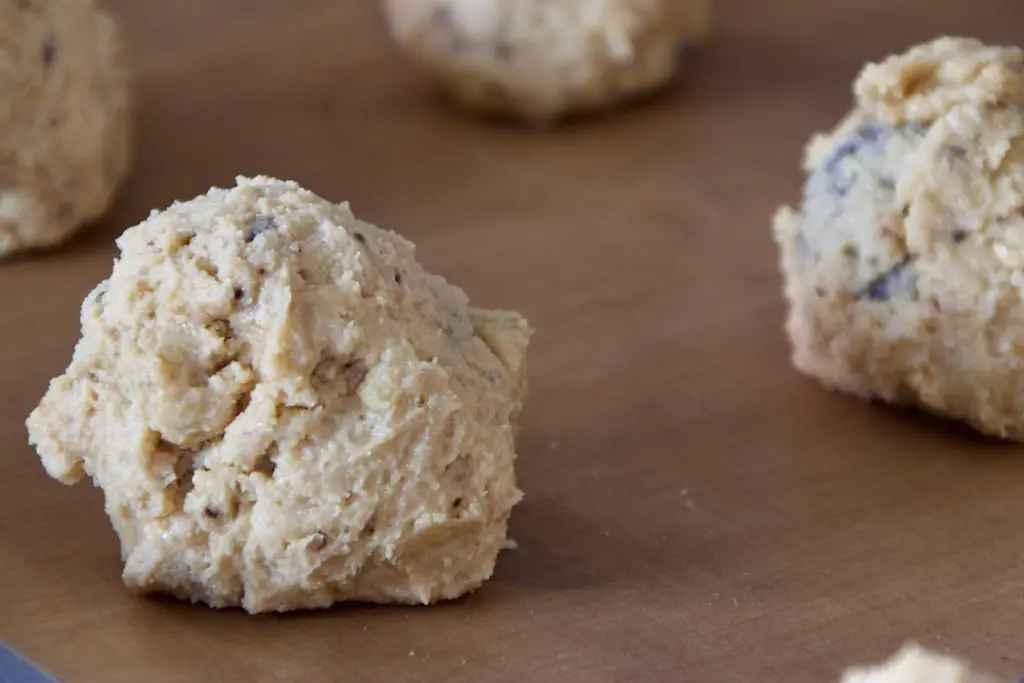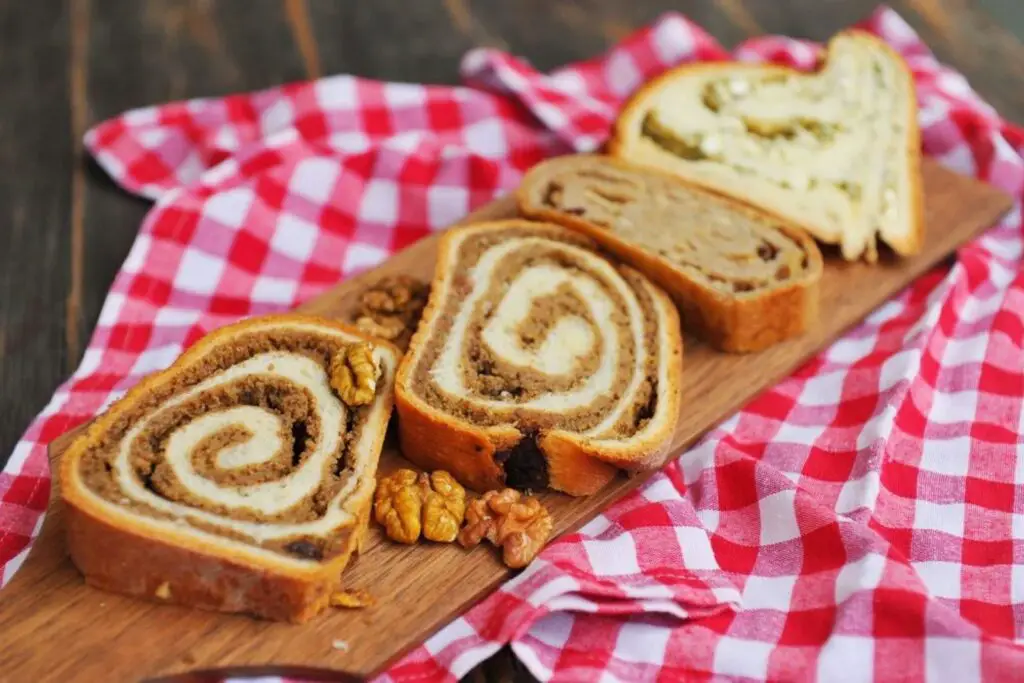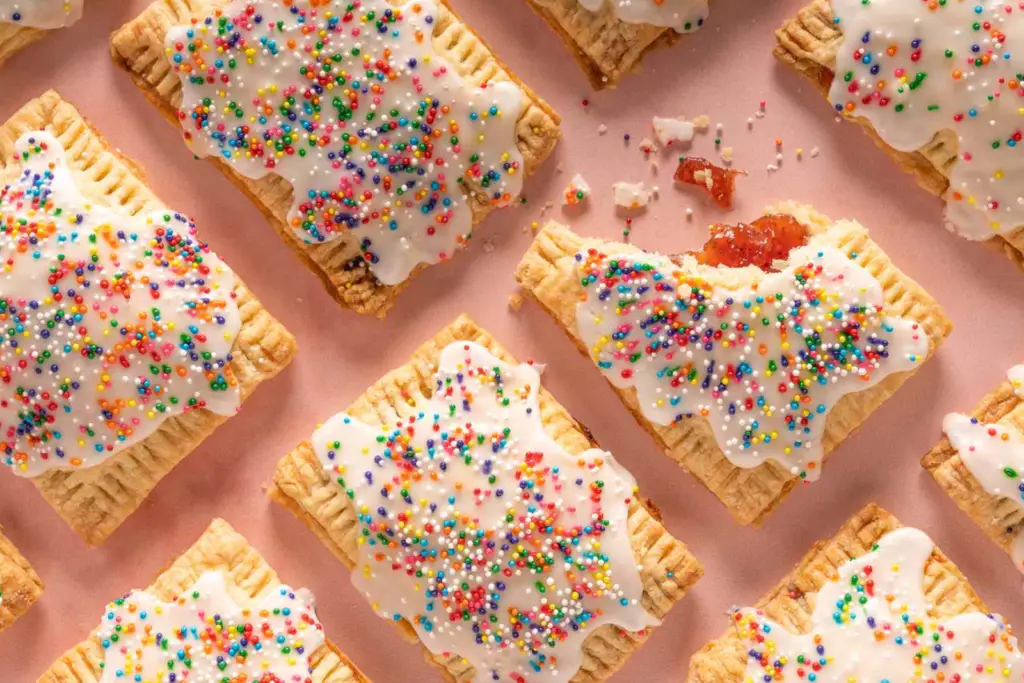
Jelly rolls are delicious and versatile desserts that consist of a thin layer of sponge cake rolled around a sweet jelly or jam filling. Whether you’ve made a batch of jelly rolls yourself or bought them from a bakery, you may find yourself with more than you can consume in one sitting. Freezing jelly rolls is a great way to extend their shelf life and enjoy them at a later time. By following a few simple steps, you can freeze jelly rolls while maintaining their texture and flavor. This article will provide you with a comprehensive guide on how to freeze jelly rolls properly for future indulgence.
Here’s a step-by-step guide on how to freeze jelly rolls:
Step 1: Choose fresh jelly rolls
Selecting fresh and high-quality jelly rolls is crucial when it comes to freezing them. Here’s why:
- Optimal taste: Fresh jelly rolls have a delicious taste and texture that you want to preserve even after freezing. When jelly rolls are made with quality ingredients and are freshly baked, they have a moist and flavorful sponge cake, and the jelly or jam filling is rich and vibrant. Freezing them while they are at their best ensures that they maintain their taste when thawed.
- Better freezing results: Fresh jelly rolls freeze more effectively than stale or expired ones. When the rolls are fresh, they contain less moisture loss, resulting in a better texture when they are thawed. Stale or dry jelly rolls may become even drier or lose their softness when frozen, compromising their overall quality.
- Reduced risk of spoilage: Choosing fresh jelly rolls minimizes the risk of spoilage during freezing. If the rolls are close to their expiration date or have been stored improperly, they may already have begun to deteriorate. Freezing such rolls could result in further degradation of their quality, taste, and texture.
To ensure you have fresh jelly rolls for freezing, consider the following tips:
- Purchase from a reputable bakery: Visit a trusted bakery known for its quality baked goods. These establishments often have high turnover, ensuring that the jelly rolls you purchase are freshly made.
- Check the expiration date: If buying pre-packaged jelly rolls, carefully check the expiration date to ensure they are fresh and have enough time before reaching their expiration date.
- Consider homemade options: If you have the time and skills, making jelly rolls at home allows you to have full control over the freshness of the ingredients and the baking process. Homemade jelly rolls can be frozen with confidence since you know exactly how they were prepared.
Step 2: Prepare the jelly rolls for freezing
Properly preparing the jelly rolls before freezing is an important step to maintain their quality. Here’s why it’s essential and how to do it:
- Remove packaging or wrapping: Most jelly rolls come packaged in plastic wrap or placed in a box. Before freezing, remove any external packaging or wrapping. This step allows the jelly rolls to be properly wrapped and prevents the packaging materials from affecting their taste or texture during freezing.
- Place on a clean surface: Choose a clean, dry surface such as a cutting board or parchment paper to work on. Placing the jelly rolls on a clean surface prevents any contamination from dirt, debris, or bacteria, ensuring their hygienic preservation.
- Remove toppings or decorations: If your jelly rolls have any toppings or decorative elements like powdered sugar, whipped cream, or fruit garnishes, it’s advisable to remove them before freezing. Toppings and decorations can become soggy or lose their appeal when exposed to moisture during freezing and thawing. Removing them helps maintain the quality and appearance of the jelly rolls.
To prepare jelly rolls for freezing, follow these steps:
- Unwrap the jelly rolls: Carefully remove any plastic wrap or packaging from the jelly rolls. Discard the packaging appropriately.
- Assess toppings and decorations: Examine the jelly rolls for any toppings or decorations. If present, gently remove them using a knife or your fingers. Be careful not to damage the cake or filling while removing the toppings.
- Keep the jelly rolls intact: Avoid unrolling or disassembling the jelly rolls during this process. It’s best to freeze them in their original rolled form to maintain their shape and structure.
Should I slice the jelly rolls before freezing?
It’s generally recommended to freeze jelly rolls in their whole, uncut form. Slicing the rolls before freezing may expose more surface area to air and increase the risk of freezer burn. It’s best to slice the jelly rolls after thawing for optimal freshness.
Step 3: Wrap individual jelly rolls
Wrapping each jelly roll individually is a crucial step in freezing them properly. Here’s why it’s important and how to do it effectively:
- Prevent sticking together: By wrapping each jelly roll individually, you create a protective barrier that prevents the rolls from sticking together during freezing. This is particularly important because the jelly filling or any moist components can cause the rolls to fuse together if left in direct contact.
- Maintain freshness and prevent freezer burn: Wrapping each jelly roll tightly with plastic wrap or aluminum foil helps seal in the freshness. It creates a barrier against air and moisture, reducing the chances of freezer burn. Freezer burn occurs when moisture evaporates from the surface of food, leading to dry and discolored spots. Proper wrapping ensures that the jelly rolls retain their moisture and quality when thawed.
To wrap individual jelly rolls for freezing, follow these steps:
- Prepare the wrapping material: Cut a piece of plastic wrap or aluminum foil large enough to cover the entire length and width of the jelly roll.
- Place the jelly roll in the center: Position the jelly roll in the middle of the plastic wrap or aluminum foil, with the seam side facing down. Make sure it is centered to allow for even wrapping.
- Wrap tightly: Begin by folding one side of the plastic wrap or aluminum foil over the jelly roll, covering it completely. Then, fold in the sides, and roll it up tightly, like a burrito. Continue rolling until the entire jelly roll is securely wrapped.
- Seal the ends: Twist or fold the ends of the plastic wrap or aluminum foil to secure them tightly. This ensures that the wrapping remains intact during freezing and prevents any air or moisture from entering.
Step 4: Place in a freezer-safe container or bag
After individually wrapping the jelly rolls, it’s important to provide an additional layer of protection by placing them in a freezer-safe container or bag. Here’s why it’s necessary and how to do it effectively:
- Enhanced protection against freezer burn: While the individual wrapping helps to prevent freezer burn, placing the wrapped jelly rolls in a freezer-safe container or bag adds an extra level of defense. Freezer-safe containers or bags are designed to resist moisture and provide insulation against the freezing temperatures, reducing the risk of freezer burn and maintaining the quality of the jelly rolls.
- Preservation of shape and structure: Placing the wrapped jelly rolls in a container or bag helps preserve their shape during freezing. The container or bag acts as a supportive barrier, preventing the rolls from being crushed or flattened by other items in the freezer. This ensures that the jelly rolls maintain their original form and appearance when thawed.
To place the individually wrapped jelly rolls in a freezer-safe container or bag, follow these steps:
- Select a freezer-safe container or bag: Choose a container or bag specifically designed for freezer storage. Look for options that are airtight and made from materials that are durable and resistant to moisture.
- Arrange the wrapped jelly rolls: Place the individually wrapped jelly rolls side by side in the container or bag, leaving some space between them to prevent them from sticking together. Avoid stacking them directly on top of one another to maintain their shape.
- Seal the container or bag: If using a container, ensure the lid is securely closed and tightly sealed. If using a bag, squeeze out as much air as possible before sealing it. This helps to minimize air exposure and maintain the freshness of the jelly rolls.
- Label the container or bag: Use a marker or adhesive labels to write the date of freezing on the container or bag. This helps you keep track of how long the jelly rolls have been frozen and assists in managing their shelf life.
Step 5: Label and date the container
Labeling and dating the container or bag containing the frozen jelly rolls is an important step in maintaining organization and managing the shelf life of the rolls. Here’s why it’s necessary and how to do it effectively:
- Tracking freezing date: By labeling the container or bag with the current date, you establish a reference point for when the jelly rolls were frozen. This is particularly important because freezing affects the quality and taste of food over time. Knowing the freezing date allows you to determine how long the jelly rolls have been stored in the freezer and plan their consumption accordingly.
- Managing shelf life: Labeling the container or bag with the freezing date helps you keep track of the recommended storage duration for the jelly rolls. While frozen foods can remain safe to eat indefinitely, their quality may decline over time. Different types of food have varying recommended storage times, and by labeling the container, you can easily identify when the jelly rolls should be consumed for the best taste and texture.
To label and date the container or bag holding the frozen jelly rolls, follow these steps:
- Use a marker or adhesive label: Choose a marker that is suitable for writing on the container or bag material. Alternatively, affix an adhesive label to the container or bag. Make sure the label or writing surface is clean and dry before applying the date.
- Write the freezing date: Clearly write the date of freezing on the label or container. Include the day, month, and year. This information will help you determine the duration the jelly rolls have been frozen.
- Optional: Add additional information: If desired, you can include additional information on the label, such as the type of jelly rolls or any special notes related to the freezing process. This can be helpful if you have multiple batches of jelly rolls in the freezer or if there are specific instructions for thawing or serving.
Step 6: Store in the freezer
After properly packaging and labeling the jelly rolls, it’s time to store them in the freezer. Proper storage ensures that the jelly rolls remain in good condition and retain their shape and texture. Here’s why it’s important and how to do it effectively:
- Maintaining shape and structure: Storing the jelly rolls in a flat position helps to preserve their shape and prevent them from getting squished or misshapen. Placing them flat also allows for easier stacking if you have multiple containers or bags of jelly rolls in the freezer.
- Protection from freezer temperature fluctuations: Freezers are designed to maintain a consistently low temperature, which is essential for food preservation. Placing the container or bag in a flat position helps ensure that the jelly rolls are evenly exposed to the cold air in the freezer. This minimizes the risk of temperature fluctuations and helps maintain the quality of the rolls.
To store the jelly rolls in the freezer effectively, follow these steps:
- Choose a suitable spot: Select a designated area in your freezer where the temperature remains consistent. Avoid placing the jelly rolls near the freezer door, as they may be exposed to more frequent temperature changes when the door is opened.
- Position the container or bag: Place the container or bag containing the jelly rolls in a flat position on a stable surface or shelf in the freezer. Ensure that the surface is clean and free from any spills or debris.
- Avoid stacking or overcrowding: If you have multiple containers or bags of jelly rolls, it’s best to avoid stacking them directly on top of each other. Instead, arrange them side by side to prevent squishing or damaging the rolls. Leave some space around each container or bag to allow proper airflow and maintain consistent freezing.
- Close the freezer door: Once the jelly rolls are placed in the freezer, close the freezer door securely to maintain a constant temperature.
How long can I store frozen jelly rolls?
Frozen jelly rolls can be stored for about 2 to 3 months without significant loss of quality. However, for the best taste and texture, it is recommended to consume them within the first month of freezing. Proper packaging, labeling, and storage in a freezer at 0°F (-18°C) or below will help maintain their quality for longer periods.
Step 7: Thaw and enjoy
After freezing the jelly rolls, it’s time to thaw them before enjoying their deliciousness. Thawing them properly is essential to maintain their moisture and texture. Here’s why it’s important and how to do it effectively:
- Retaining moisture: Thawing the jelly rolls gradually in the refrigerator helps retain their moisture. The controlled and gradual thawing process prevents the rolls from drying out, which can occur if they are thawed at room temperature or with heat sources.
- Avoiding sogginess: Thawing jelly rolls in the refrigerator also prevents them from becoming soggy. Slow thawing allows the moisture within the rolls to redistribute evenly, minimizing the risk of excess moisture saturating the cake and compromising its texture.
To thaw the frozen jelly rolls effectively, follow these steps:
- Transfer to the refrigerator: Take the container or bag of frozen jelly rolls from the freezer and place it in the refrigerator. Make sure to position it on a shelf where it can remain undisturbed.
- Allow gradual thawing: Let the jelly rolls thaw in the refrigerator for a few hours or overnight, depending on their size and thickness. It’s important to thaw them gradually to ensure even thawing and prevent any potential sogginess.
- Check for readiness: After the recommended thawing time, check the jelly rolls to see if they have completely thawed. Gently touch the cake portion to ensure it feels soft and pliable. The rolls should no longer be frozen or cold to the touch.
- Serve and enjoy: Once thawed, the jelly rolls are ready to be enjoyed. Slice them into individual servings and savor the delicious flavors and textures.
Other related questions
Can I refreeze jelly rolls?
It is generally not recommended to refreeze jelly rolls once they have been thawed. Refreezing can affect their quality, texture, and taste. It is best to consume jelly rolls after the initial thawing to ensure the best eating experience.
How do I know if the jelly rolls have gone bad after being frozen?
To determine if frozen jelly rolls have gone bad, there are a few signs to look for. First, check for any noticeable changes in color, texture, or smell. If the rolls appear discolored, have an off texture, or emit an unusual odor, it may indicate spoilage. Additionally, if there are signs of freezer burn, such as dry or shriveled areas, the quality of the jelly rolls may have been compromised. When in doubt, it is safest to discard them to avoid any potential foodborne illnesses.
Can I freeze jelly rolls with different fillings?
Yes, you can freeze jelly rolls with various fillings. However, it’s important to note that certain fillings may have different freezing and thawing properties. Cream-based fillings may not freeze well and could become watery when thawed. Consider choosing fillings that are less likely to be affected by freezing and thawing, such as fruit preserves or jams.
Can I freeze jelly rolls with fresh fruit fillings?
Freezing jelly rolls with fresh fruit fillings is possible, but the texture and consistency of the fruit filling may change upon thawing. The fruit might become slightly softer and release more moisture. Consider using fruit preserves or cooked fruit fillings instead, as they tend to freeze and thaw more successfully.
Can I freeze partially eaten jelly rolls?
It is not advisable to freeze partially eaten jelly rolls. Once a jelly roll has been partially consumed, it is exposed to air and potential contamination. This can affect its quality and increase the risk of spoilage. It’s best to freeze whole jelly rolls that have not been partially eaten for optimal results.
Is it possible to freeze gluten-free jelly rolls?
Yes, you can freeze gluten-free jelly rolls just like regular jelly rolls. However, it’s important to ensure that all the ingredients used in the jelly rolls are gluten-free, including the flour used for the sponge cake. Properly wrap and store the gluten-free jelly rolls to maintain their quality during freezing.
Can I freeze jelly rolls that have been filled with custard or pudding?
Freezing jelly rolls with custard or pudding fillings is possible, but the texture of the custard or pudding may change upon thawing. It may become slightly softer or less creamy. Consider using alternative fillings like fruit preserves or jams for better results when freezing jelly rolls.








